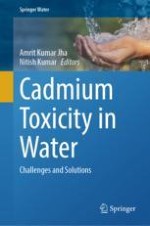2024 | OriginalPaper | Buchkapitel
Toxicity of Rhizospheric Cadmium Contaminated Soil and Its Phytoremediation
verfasst von : Prasann Kumar, Debjani Choudhury
Erschienen in: Cadmium Toxicity in Water
Verlag: Springer Nature Switzerland
Aktivieren Sie unsere intelligente Suche, um passende Fachinhalte oder Patente zu finden.
Wählen Sie Textabschnitte aus um mit Künstlicher Intelligenz passenden Patente zu finden. powered by
Markieren Sie Textabschnitte, um KI-gestützt weitere passende Inhalte zu finden. powered by
